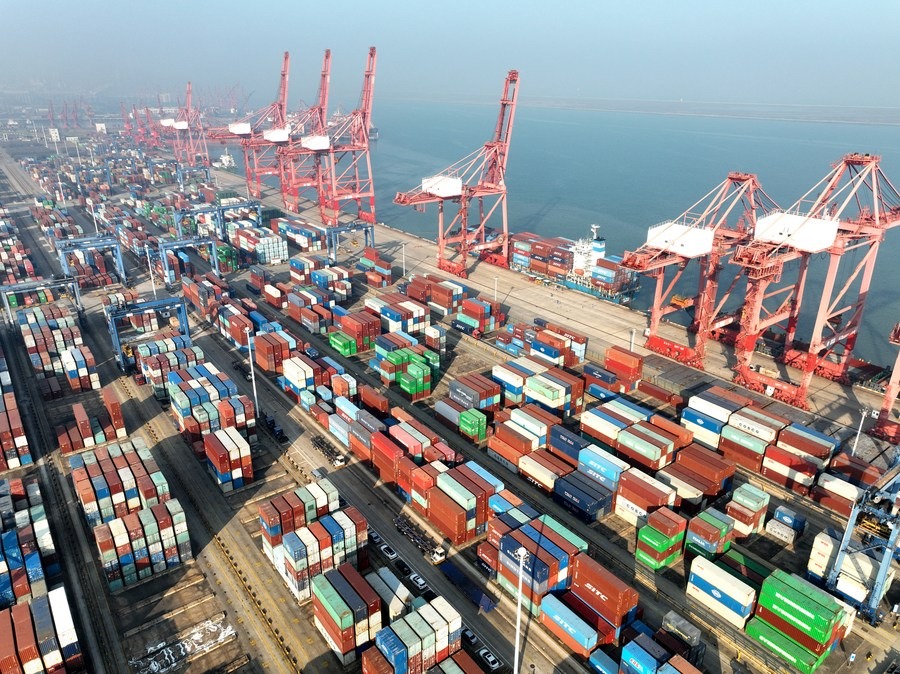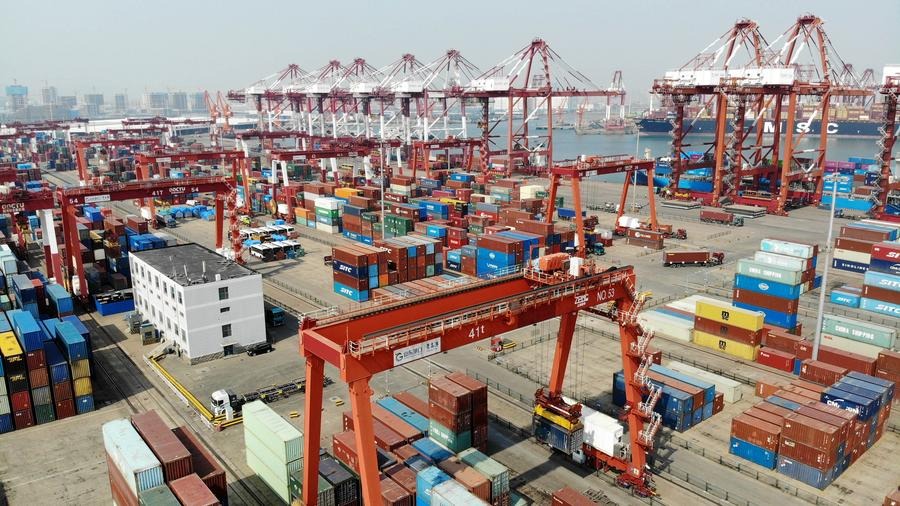Asia
Media freedom situation in Afghanistan

The Media Freedom Coalition (MFC) has announced that it has removed Afghanistan’s membership in the coalition, citing the deterioration in the country’s media freedom situation as a core reason behind it.
Canada and Netherlands, which jointly chair the global MFC, said that the situation of Afghan media is no longer in accordance with the country’s obligations and they have annulled its membership.
Afghanistan joined the coalition in January 2020 after fulfilling the Global Pledge, and committed to fulfill its global obligations towards freedom of expression. However, the MFC said the decision to remove Afghanistan from the coalition was made after consultation with the members of the coalition and in accordance with the membership conditions of this association.
MFC said that “for the coalition, it is clear that unfortunately the situation of media freedom in Afghanistan is no longer in accordance with the global commitment (of this country) and the current situation (of media freedom) is one of the serious concerns of (the coalition).”
The coalition also lamented the rapid loss of freedom of media in Afghanistan since last year due to persistent harassment, assaults, detentions, and exclusion of women from the media, putting journalists’ lives in danger every day. But the MFC will continue to keep a careful eye on the state of media freedom in Afghanistan.
A quick change on Afghanistan’s freedom of expression
There has been a quick change in the landscape of freedom of media in Afghanistan after regaining power by the Taliban in 2021. Hundreds of journalists and media workers left the country, and hundreds more became jobless within a night. Several news agencies, including some popular tv channels and newspapers closed due to political and economic pressures.
But it is not the end of the road, because still there are many media outlets active in Afghanistan and are making all out efforts to report impartially with all journalism ethics codes. But at the same time they are scrambling to get first hand news as access to information has been limited. There are also reports coming out over censorship that have made the free flow of information into serious challenges.
Reports of violence against journalists have also hit the peak and as per the United Nations Assistance Mission in Afghanistan (UNAMA) report, there have been over 200 cases of journalist human rights violations recorded in the past over one year.
Over 245 cases of violence against journalists recorded during Taliban’s first year rule
Afghanistan Journalist Center said it acknowledges the concern of the MFC about the situation of freedom of expression in Afghanistan as it had recorded at least 245 incidents of violence against journalists and media workers during the one year of the Taliban rule from 15 August 2021 to 15 August 2022.
The center also recorded at least 130 cases of temporary detention with violence and threats from one to several hours or several days during the span of time. Among the detained journalists, Khalid Qadri, former presenter of Nowruz Radio in Herat province, has been sentenced to one year in prison for publishing his critical views on the Taliban government on social media.
The Taliban has urged to comply with its commitment regarding the applicability of the law of mass media and related laws and regulations (approved by the republican system) and while respecting the free media, it should immediately remove the restrictions imposed on the media outlets and journalists.
Taliban regretted expulsion of Afghanistan from MFC
Reacting to the expulsion of Afghanistan from MFC, the Taliban top official regretted the decision and said that the government is fully committed to support free media in Afghanistan.
Taliban advisor to the Ministry of Information and Culture, Abdul Matin Qani said that the ministry is committed to freedom of expression and fully supports media outlets and access to information in accordance with Islamic and national values.
The Taliban condemns the unilateral decision of the MFC to remove Afghanistan from the global coalition, according to Qani, blaming the MFC for not fully aware of the realities in Afghanistan. “The international community should understand the realities on the ground in Afghanistan and surely they are aware of the fact that Afghan media are operating freely and freedom of expression is there in Afghanistan,” the official said.
While calling the MFC’s decision regrettable, Qani said that the ministry will continue to support the freedom of expression and the media in Afghanistan. The MFC was asked to reconsider its decision.
However, the Taliban has apparently ordered the media not to publish news, reports, and analytical materials in opposition to and against the Taliban regime, ideology, and method of governance. Taliban had already banned broadcasting of foreign movies, TV series, and commercial advertisements that contain images of women. Female journalist’s appearances on the screen had already been restricted and they must wear a hijab during any news bulletin or interviews.
219 media outlets in Afghanistan stopped operations
219 media outlets in Afghanistan have stopped operations in the past one year. Out of 547 active media outlets in Afghanistan till 2021, only 328 media outlets have continued to operate after the Taliban seized power. Other media protecting agencies also said that the activities of 318 media outlets were stopped and nearly three thousand journalists lost their jobs during the past one year.
Indeed, the growth of an independent media in Afghanistan since 2001 was one of the greatest successes and most of these outlets were privately owned. Most of the government’s performance and activities are observed and covered by media and are criticized by media when required and it was effective somehow. But it was not like everything was perfect, and the media sector does not have challenges. Nearly 50 journalists were killed and hundreds of violations against the media have been recorded at that time. Several cases of journalist’s assassination remained uninvestigated, and in most of these incidents the previous government was blamed for.
However, the Taliban, the current ruler of Afghanistan, must let the media workers and journalists carry their jobs because journalism is not a crime but rather it plays a role of bridge connecting people to the government. In fact, the media has been considered as the fourth pillar of the state because it informs the government of situation on the ground.
Asia
China’s April exports defy tariff expectations with 8% rise

China’s export growth showed resilience in April, defying expectations that the effects of the trade war with the US would begin to be felt. According to statistics released by China’s customs administration on Friday, exports increased by 8.1% year-on-year in dollar terms.
This increase was below the 12.4% growth recorded in March. However, according to data released by the customs administration on Friday, this increase was well above the 1.9% growth forecast in a Reuters poll of economists.
Imports, meanwhile, fell for the third consecutive month, contracting by 0.2% last month.
Exports to the US fell by 21% last month, while imports from the US decreased by 13.8%.
Exports to China’s largest trading partners, the Association of Southeast Asian Nations and the European Union, increased by 20.8% and 8.3% respectively.
The figures were released after Washington and Beijing entered a trade war.
US President Donald Trump last month implemented tariff increases of up to 145% on most products imported from China and said he would impose new tariffs even on low-value packages from the country. Beijing responded with a 125% tariff.
The two countries will begin trade talks in Geneva on Saturday. The US will be represented by Treasury Secretary Scott Bessent and Trade Representative Jamieson Greer, while China’s delegation will be led by Vice Premier He Lifeng, the country’s top economic official.
This will be the first high-level meeting between the two sides since January, when Chinese Vice President Han Zheng attended Trump’s inauguration ceremony. Bessent said the trade war was “unsustainable.”
Asia
Chinese consumer spending rebounds during May Day break

During the five-day May Day holiday, Chinese spending increased by 8% year-on-year, reaching 180.27 billion yuan (approximately $25 billion), indicating that consumer activity remains vibrant.
An estimated 314 million domestic trips were made, marking a 6.4% increase compared to the previous year.
The May Day holiday, one of the country’s longest breaks, is closely watched as a barometer of Chinese consumer confidence.
China’s Ministry of Culture and Tourism recorded 314 million domestic trips during the holiday, a 6.5% increase, while the number of transactions using Weixin Pay, a popular payment app, rose by more than 10% year-on-year, with a notable surge in restaurant spending.
According to Reuters’ calculations based on official data, total spending per person during the five-day May holiday period, typically a busy time for family travel, increased by 1.5% to 574.1 yuan.
This figure remained below pre-pandemic levels, when spending per person was 603.4 yuan.
Consumption in the world’s second-largest economy has been hurt by a post-pandemic slowdown and a prolonged property crisis, with the effects of the US-China trade war expected to deepen these challenges.
Meanwhile, China’s services sector saw a slowdown in new order growth compared to March, according to a private sector survey released on Tuesday, due to uncertainty caused by US tariffs.
Despite stronger-than-expected economic growth in the first quarter, supported by government stimulus, the Chinese economy continues to face persistent deflationary risks.
The Caixin/S&P Global services purchasing managers’ index (PMI) fell to 50.7 from 51.9 in March, marking its lowest reading since September.
This aligns largely with the official survey, which showed services activity in China easing to 50.1 from 50.3 the previous month.
The Caixin services survey indicated that new business growth slowed to its weakest level since December 2022, although export orders saw some increase, partly linked to the recovery in tourism.
Zichun Huang, China economist at Capital Economics, said the drop in the Caixin PMI “provides further evidence that the trade war is weighing on economic activity in China, even beyond the manufacturing sector.”
Huang added, “While some caution is clearly warranted, we suspect firms are overstating how much damage US tariffs will do.”
Around 48% of China’s workforce was employed in the services sector in 2023, and the sector contributed 56.7% to total GDP last year. However, US President Donald Trump’s trade actions could hit the manufacturing sector and damage businesses’ hiring plans and consumer confidence.
Business sentiment in the services sector grew at its slowest pace since February 2020, with companies citing US tariffs as a major concern.
Service providers cut jobs for a second consecutive month to reduce costs, leading to an increase in backlogs of work and pushing the relevant indicator into expansionary territory for the first time this year.
Firms also lowered prices to attract customers despite high input costs.
Asia
Third countries sound alarm over Chinese tariff evasion tactics

Chinese exporters are increasing their efforts to conceal the true origin of their goods by shipping them through third countries to avoid tariffs imposed by US President Donald Trump.
According to a report by the Financial Times (FT), the influx of goods from China has sounded alarm bells in neighboring countries, which are reluctant to become transshipment points for trade directed at the US.
The increasing prevalence of this tactic highlights concerns that new tariffs of up to 145% imposed by Trump on Chinese goods will impede exporters’ access to one of their most important markets.
Sarah Ou, a salesperson at Baitai Lighting, an exporter based in the southern Chinese city of Zhongshan, told the FT, “The tariff is very high,” adding, “But we can sell the goods to neighboring countries, and the neighboring countries can sell them to the US, and thus the tariffs are reduced.”
US trade laws require goods to undergo a “substantial transformation” in a country, typically including processing or manufacturing that adds significant value, to be considered the country of origin for tariff purposes.
However, advertisements on Chinese social media platforms like Xiaohongshu offer exporters the option of sending their goods to countries like Malaysia, obtaining new certificates of origin there, and then shipping them to the US.
An advertisement posted this week on Xiaohongshu by an account called ‘Ruby — Third Country Transshipment’ read, “Did the US impose tariffs on Chinese products? Transit through Malaysia and ‘transform’ them into Southeast Asian goods!”
It added, “Did the US impose restrictions on Chinese-origin wood flooring and tableware? ‘Wash the origin’ in Malaysia and pass customs smoothly!”
South Korea’s customs service announced last month that it had found 29.5 billion won ($21 million) worth of foreign products with falsified countries of origin in the first quarter of this year, most of which came from China and were almost entirely destined for the US.
The agency said in a statement, “Due to changes in the US government’s trade policy, we are seeing a sharp increase recently in cases where our country is being used as a transit point for products to avoid different tariffs and restrictions.”
Vietnam’s Ministry of Industry and Trade last month called on local trade associations, exporters, and manufacturers to strengthen origin controls for raw materials and input goods and prevent the issuance of fraudulent certificates.
Thailand’s Department of Foreign Trade also announced measures last month to tighten origin controls on products shipped to the US to prevent tariff evasion.
Ou from Baitai said that, like many Chinese manufacturers, the company ships goods “free on board” (FOB), meaning responsibility passes to the buyer once the goods leave the port of departure, thus reducing the exporter’s legal risk.
She said, “Customers just have to find a port in Guangzhou or Shenzhen, and as long as the goods reach there, we have completed our task. After that it is not our business.”
Salespeople from two logistics companies said they could ship goods to Malaysia’s Port Klang, where they would transfer the goods to local containers and change their labels and packaging. The salespeople, who asked not to be named, told the FT that the companies had connections with factories in Malaysia that could help issue certificates of origin.
Malaysia’s Ministry of Investment, Trade and Industry stated that the country is “committed to upholding the integrity of international trade practices” and “views any attempt to circumvent tariffs through false or fraudulent declarations, whether related to the value or origin of goods, as a serious offense.”
It added, “If the veracity of these reports is established, we will initiate investigations in cooperation with the customs department and US authorities and take necessary measures.”
China’s foreign and commerce ministries did not respond to the Financial Times‘ requests for comment regarding Chinese exporters.
-

 Opinion1 week ago
Opinion1 week agoThe UAE’s Bold Leap into the Global LLM Race
-

 Diplomacy2 weeks ago
Diplomacy2 weeks agoUAE deploys Israeli radar in Somalia’s Puntland region
-

 Asia2 weeks ago
Asia2 weeks agoAfghanistan’s trade route with India via Pakistan closed following tensions in Kashmir
-

 Europe2 weeks ago
Europe2 weeks agoUK, EU leaders to finalize defense and fishing deals
-

 Europe1 week ago
Europe1 week agoCDU names Johann Wadephul for foreign minister role
-

 Diplomacy2 weeks ago
Diplomacy2 weeks agoGlobal military spending hits record high in 2024, SIPRI reports
-

 Europe2 weeks ago
Europe2 weeks agoGerman state prepares Deutsche Bahn and Lufthansa for war
-

 Asia4 days ago
Asia4 days agoThird countries sound alarm over Chinese tariff evasion tactics


















